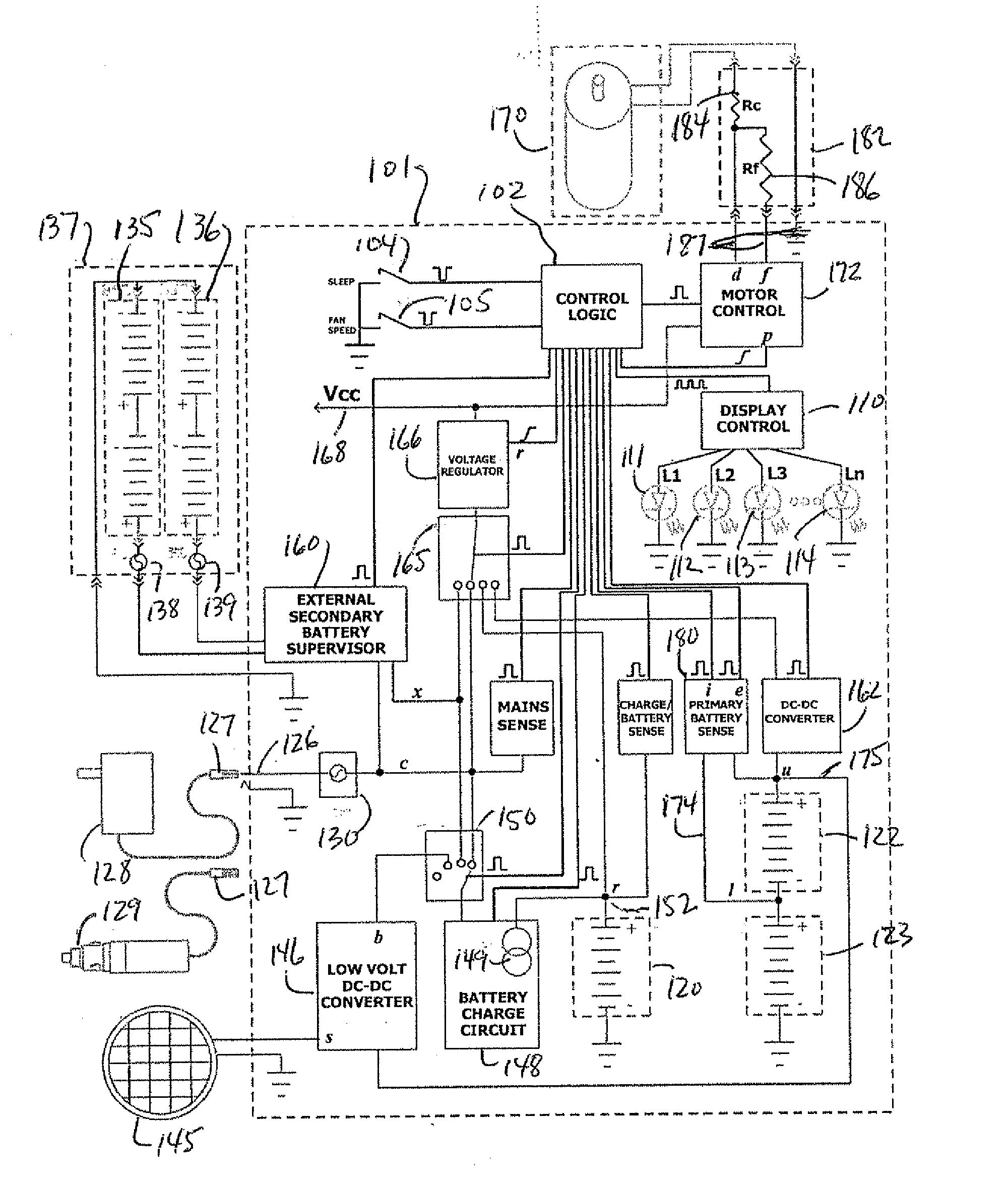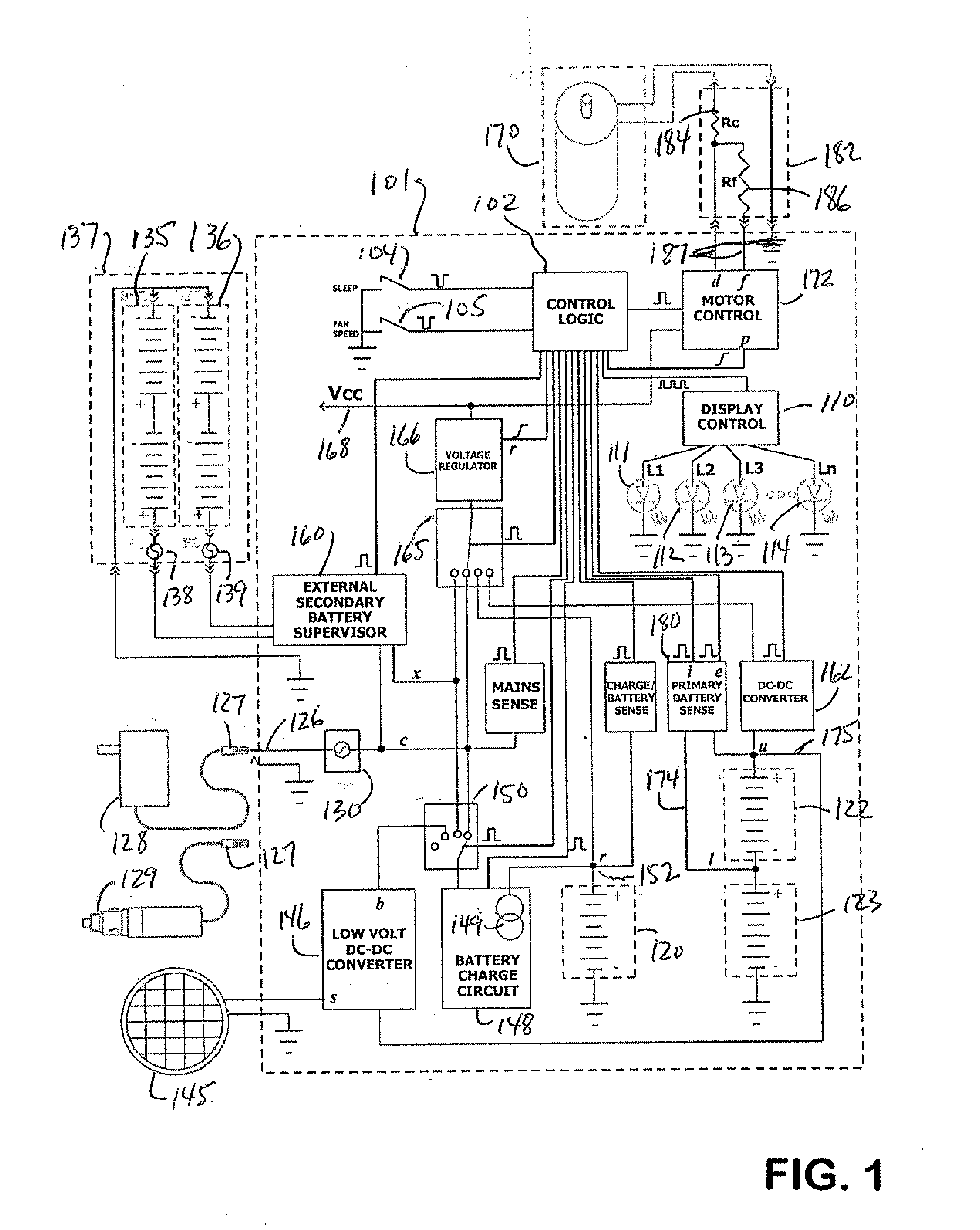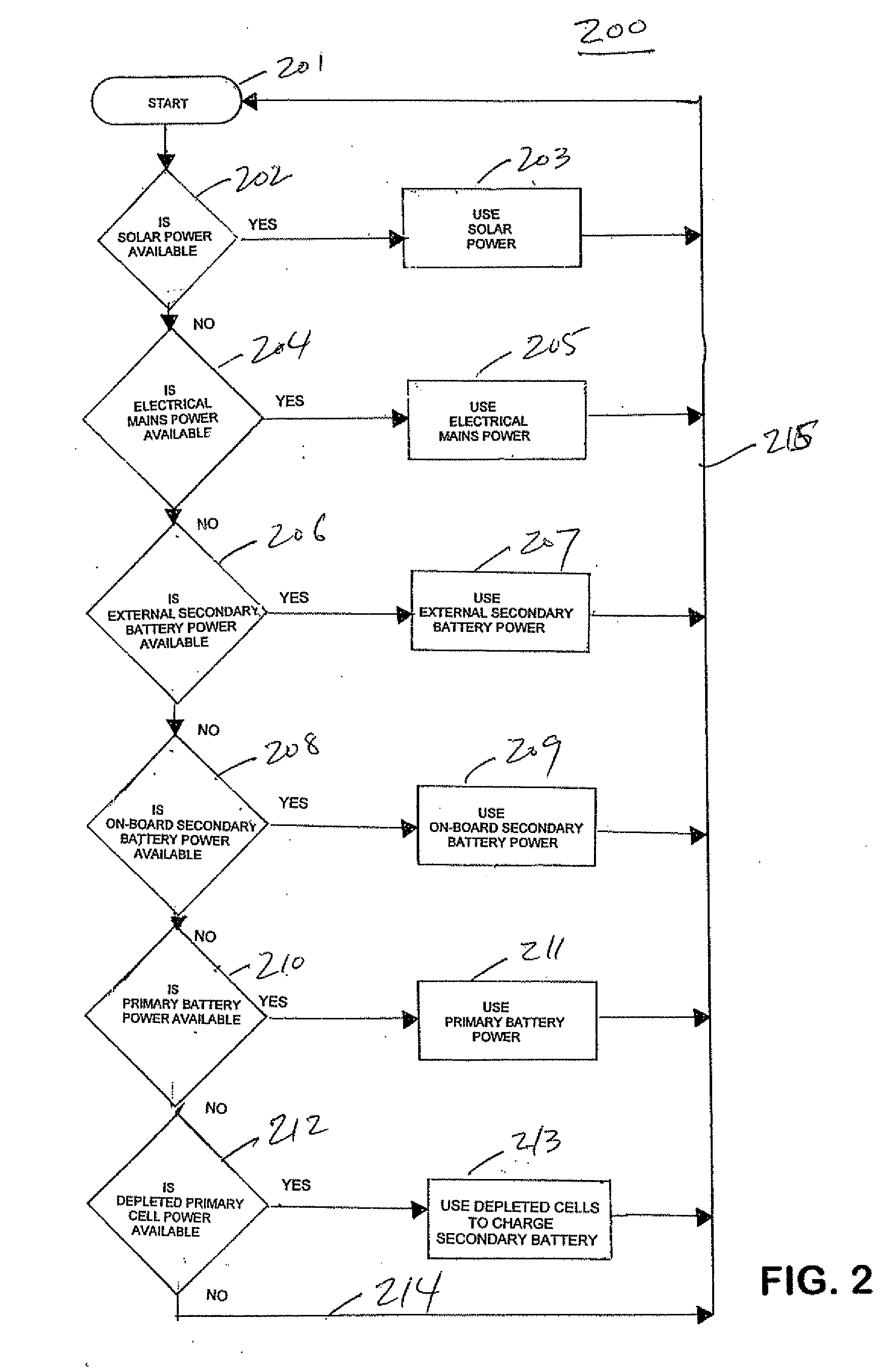Intelligent motorized appliances with multiple power sources
a technology of intelligent motors and power sources, applied in the direction of motor/generator/converter stoppers, dynamo-electric converter control, secondary cell servicing/maintenance, etc., can solve the problems of not being the best choice for standby or intermittent use, secondary batteries tend to self-discharge, and the cost of rechargeable batteries can be amortized over hundreds of charges, so as to prevent damage
- Summary
- Abstract
- Description
- Claims
- Application Information
AI Technical Summary
Benefits of technology
Problems solved by technology
Method used
Image
Examples
Embodiment Construction
[0045]It will be understood that the present invention may be embodied in other specific forms without departing from the spirit thereof. The present examples and embodiments, therefore, are to be considered in all respects as illustrative and not restrictive, and the invention is not to be limited to the details presented herein.
[0046]With reference to FIG. 1, the core of the intelligent motorized appliance is an intelligent power pack 101, which includes control logic 102, which may be implemented as one or more micro-controllers, programmed gate array logic, discrete logic, or any combination thereof. The control logic 102 interfaces with the numerous switches, relays and sensors which together implement the intelligent power pack 101. The user interface includes a pair of momentary-ON switches 104 and 105 to signal a sleep operation (ON for fixed amount of time followed by shut-off) and to index through speeds from HIGH to LOW to OFF and any increments in between.
[0047]Part of t...
PUM
 Login to View More
Login to View More Abstract
Description
Claims
Application Information
 Login to View More
Login to View More - R&D
- Intellectual Property
- Life Sciences
- Materials
- Tech Scout
- Unparalleled Data Quality
- Higher Quality Content
- 60% Fewer Hallucinations
Browse by: Latest US Patents, China's latest patents, Technical Efficacy Thesaurus, Application Domain, Technology Topic, Popular Technical Reports.
© 2025 PatSnap. All rights reserved.Legal|Privacy policy|Modern Slavery Act Transparency Statement|Sitemap|About US| Contact US: help@patsnap.com



